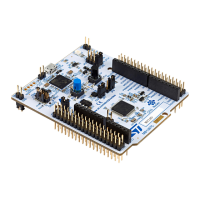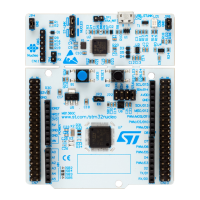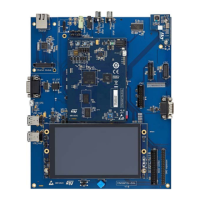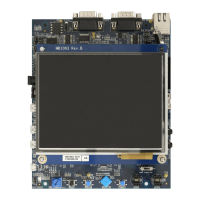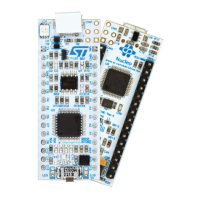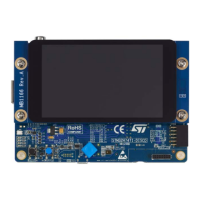Hardware layout and configuration UM2324
24/43 UM2324 Rev 4
6.7.2 HSE: OSC 8 MHz clock supply
There are four ways to configure the pins corresponding to the external high-speed clock
(HSE):
• HSE not used (default): PF0 and PF1 are used as GPIOs instead of clocks. The
configuration must be:
– SB25 and SB27 ON
– SB17 (MCO) OFF
– R33 and R34 OFF
• MCO from ST-LINK: MCO output of ST-LINK is used as an input clock. This frequency
cannot be changed, it is fixed at 8
MHz and connected to the PF0-OSC_IN of the
STM32 microcontroller. The configuration must be:
–SB17 ON
– SB25 and SB27 OFF
– R33 and R34 OFF
• HSE on-board oscillator from X3 crystal (not provided): for typical frequencies,
capacitors, and resistors, refer to the STM32 microcontroller datasheet and the
Oscillator design guide for STM8S, STM8A, and STM32 microcontrollers application
note (AN2867) for the oscillator design guide. The X3 crystal has the following
characteristics: 8
MHz, 8 pF, 20 ppm. It is recommended to use NX3225GD-8.000M-
EXS00A-CG04874 manufactured by NIHON DEMPA KOGYO CO., LTD. The
configuration must be:
– SB25 and SB27 OFF
– R33 and R34 soldered
– C24 and C25 soldered with 10 pF capacitors
–SB17 OFF
• Oscillator from external PF0: from an external oscillator through pin 29 of the CN7
connector. The configuration must be:
–SB25 ON
–SB17 OFF
– R33 and R34 removed
6.8 Reset sources
The reset signal of the STM32 Nucleo-64 board is active low and the reset sources include:
• B2 Reset button
• Embedded ST-LINK/V2-1
• Pin 3 of the CN6 ARDUINO
®
Uno V3 connector
• Pin 14 of the CN7 ST morpho connector
6.9 UART2 communication
The UART2 interface of the STM32 is connectible to:
• The ST-LINK/V2-1 MCU
• The ST morpho connector (CN10 pin 6 and pin 34)
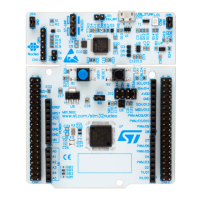
